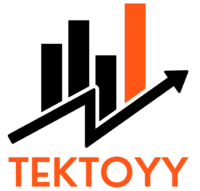The cryptocurrency market is a vibrant, ever-expanding universe. Every day, it seems new digital coins and tokens appear, each promising to be the next big innovation. For investors, this raises a fundamental question: where do all of these new cryptocurrencies actually come from? Unlike government-issued money that is printed by a central bank, crypto creation is a process driven by code, mathematics, and economics.
Understanding how new cryptocurrencies are born is not just a technical curiosity; it’s a crucial piece of knowledge for any serious investor. The creation method directly impacts a coin’s security, its level of decentralization, and its economic model—factors that can determine its long-term value. This guide will demystify the fascinating processes behind crypto creation, from the digital mines of Bitcoin to the modern world of staking and token generation.
The Foundation: What Does It Mean to “Create” a Cryptocurrency?

First, we must shift our thinking away from the physical world. Creating a cryptocurrency isn’t about minting a physical coin or printing a paper bill. Instead, new units of a cryptocurrency are generated and brought into circulation according to a strict set of rules embedded in its software protocol.
This protocol is the constitution of the cryptocurrency. It’s an open-source rulebook that dictates everything: how transactions are verified, how the network remains secure, and, most importantly, the precise conditions under which new coins can be created.
Because these protocols are run on decentralized networks distributed across thousands of computers globally, no single person, company, or government can simply decide to create more coins. The creation process is automated, predictable, and transparent to all participants. The two most dominant methods for achieving this are known as Proof-of-Work and Proof-of-Stake.
Proof-of-Work (PoW): The Original Method of Crypto Mining
Proof-of-Work was the pioneering mechanism introduced by Bitcoin in 2009. It is a robust and highly secure system that relies on a process called mining.
What is Crypto Mining?
Think of crypto mining as a massive, competitive, global puzzle-solving contest. In this contest, powerful computers known as “miners” all race to solve an incredibly complex mathematical problem. The first miner to find the solution gets the right to perform a critical task: validate a new “block” of transactions and add it to the blockchain’s public ledger.
These miners aren’t just solving puzzles for fun. Their work is essential for two reasons:
- It secures the network: The sheer amount of computational power required to solve these puzzles makes it astronomically difficult and expensive for any malicious actor to tamper with the transaction history.
- It creates new coins: This is where the magic happens. As a reward for their effort and the electricity they consumed, the winning miner receives a prize. This prize consists of two parts: the transaction fees paid by users in that block, and a brand-new, freshly created batch of cryptocurrency. This is known as the block reward.
For Bitcoin, this process occurs approximately every 10 minutes. When a miner successfully adds a block to the Bitcoin blockchain, new BTC that never existed before is brought into circulation. This is the only way new bitcoins are ever created.
The Economics of Scarcity: The Halving
One of the most brilliant aspects of Bitcoin’s design is a pre-programmed event called the halving. Approximately every four years (or every 210,000 blocks), the block reward for miners is cut in half.
- When Bitcoin started, the reward was 50 BTC per block.
- In 2012, it was halved to 25 BTC.
- In 2016, it was halved to 12.5 BTC.
- In 2020, it was halved to 6.25 BTC.
- The most recent halving in 2024 cut it to 3.125 BTC.
This process ensures that Bitcoin becomes increasingly scarce over time, mimicking the extraction of precious metals like gold. This deflationary economic model is a core part of its value proposition as “digital gold.”
- Pros of PoW: Unparalleled security proven over more than a decade; highest degree of decentralization.
- Cons of PoW: Extremely high energy consumption; requires expensive, specialized hardware (ASICs), creating a high barrier to entry.
Proof-of-Stake (PoS): The Energy-Efficient Alternative

As the crypto world evolved, concerns about Proof-of-Work’s energy consumption led to the development of a popular alternative: Proof-of-Stake. Major cryptocurrencies like Ethereum (since its “Merge” upgrade), Cardano, and Solana all use this mechanism.
What is Crypto Staking?
Instead of relying on computational power (mining), Proof-of-Stake relies on an economic commitment. In a PoS system, participants, known as validators, lock up or “stake” a certain amount of their own cryptocurrency as collateral. By doing so, they signal their commitment to the network’s health and enter a lottery to be chosen to validate the next block of transactions.
The protocol selects a validator to create the next block, often based on factors like the size of their stake and the amount of time they’ve been staking. The more coins a validator stakes, the higher their chance of being chosen.
If the chosen validator properly creates a new block and validates the transactions within it, they receive a reward. This reward, similar to a PoW block reward, is typically a combination of transaction fees and newly created coins. This process is often called “forging” or “minting” rather than mining.
The Security Mechanism: Slashing
To keep validators honest, PoS systems implement a penalty mechanism known as slashing. If a validator tries to cheat the system—for example, by approving fraudulent transactions—the protocol can automatically destroy a portion (or all) of their staked coins. This powerful economic disincentive ensures that validators have more to gain by playing by the rules than by trying to attack the network.
- Pros of PoS: Drastically more energy-efficient (up to 99.95% less energy than PoW); lower barrier to entry for participants (no need for specialized hardware).
- Cons of PoS: Can potentially lead to centralization, as those with the most coins earn the most rewards (a “the rich get richer” scenario); it is a newer and less battle-tested security model compared to PoW.
Beyond Mining and Staking: Other Ways New Coins Enter Circulation
While PoW and PoS are the primary methods for the ongoing creation of coins, many projects use different strategies to launch and distribute their initial supply.
Initial Coin Offerings (ICOs) and Token Generation Events (TGEs)
An ICO is a form of crowdfunding for a new crypto project. In this model, the project’s developers generate the entire supply (or a large portion of it) of their new token at the very beginning. This is often called “pre-mining.” They then sell these pre-mined tokens to early investors in exchange for established cryptocurrencies like Bitcoin or Ethereum. The capital raised is used to fund the development and marketing of the project.
The ICO model was immensely popular in 2017 but became associated with scams and regulatory issues. Today, more regulated variations exist, such as Initial Exchange Offerings (IEOs), where the sale is managed by a cryptocurrency exchange.
Airdrops
An airdrop is a marketing strategy that involves distributing a new cryptocurrency for free to the wallets of existing crypto users. A new project might, for example, airdrop its tokens to everyone who has used a particular decentralized exchange or holds a certain amount of Ethereum.
The goals of an airdrop are to:
- Bootstrap a community: Instantly create a large base of token holders who have a vested interest in the project’s success.
- Reward early adopters: Give back to the community and generate goodwill.
- Decentralize distribution: Spread the token supply across many different users rather than concentrating it in the hands of a few early investors.
One of the most famous examples was the Uniswap (UNI) airdrop, where the decentralized exchange distributed 400 UNI tokens to every user who had ever interacted with its platform, worth thousands of dollars at the time.
Forks: Creating a New Crypto from an Old One
Sometimes, a new cryptocurrency can be created from an existing one through a process called a hard fork. A hard fork is a radical change to a blockchain’s protocol that is not backward-compatible. When the community disagrees on the change, the blockchain can permanently split into two.
When this happens, two separate blockchains are created, each with its own cryptocurrency. The original blockchain continues on its path, and a new one is formed that follows the new set of rules. The entire transaction history of the original chain is duplicated onto the new chain up to the point of the split.
A famous example is Bitcoin Cash (BCH). In 2017, a segment of the Bitcoin community wanted to increase the block size to allow for faster transactions. When they couldn’t reach a consensus, they initiated a hard fork. This created Bitcoin Cash, and anyone who held Bitcoin at the time of the split automatically received an equal amount of the new Bitcoin Cash in their wallet.
Tokenomics: The Economics of Cryptocurrency Creation

The rules governing the creation and supply of a cryptocurrency are known as its tokenomics. For an investor, understanding a project’s tokenomics is just as important as understanding its technology.
Key factors to analyze include:
- Supply Schedule: Is the supply capped, like Bitcoin’s 21 million, making it a scarce, deflationary asset? Or is it inflationary, with no hard cap, designed to be used for ongoing network rewards?
- Issuance Rate: How quickly are new coins created and released into the market? A rapid issuance can put downward pressure on the price.
- Initial Distribution: How were the first coins distributed? Was it a fair launch where everyone had a chance to mine from day one (like Bitcoin)? Or was a large percentage given to the team and private investors through an ICO? The distribution can reveal a lot about how decentralized a project truly is.
- Utility: What is the token actually used for? Does it have a clear purpose within its ecosystem, such as paying fees, voting on governance proposals, or accessing services? A strong utility creates natural demand for the token.
From Code to Capital
The creation of a new cryptocurrency is a fascinating blend of computer science, economics, and game theory. It is not an arbitrary act but a carefully designed process governed by a transparent and verifiable set of rules written in code.
Whether through the intense computational race of Proof-of-Work mining, the economic pledge of Proof-of-Stake validating, or the strategic distribution of an ICO or airdrop, each method has profound implications for a coin’s security, decentralization, and value. As an investor, looking past the price charts to understand these foundational mechanics will empower you to make more informed, confident, and ultimately more successful decisions in the dynamic world of digital assets.







